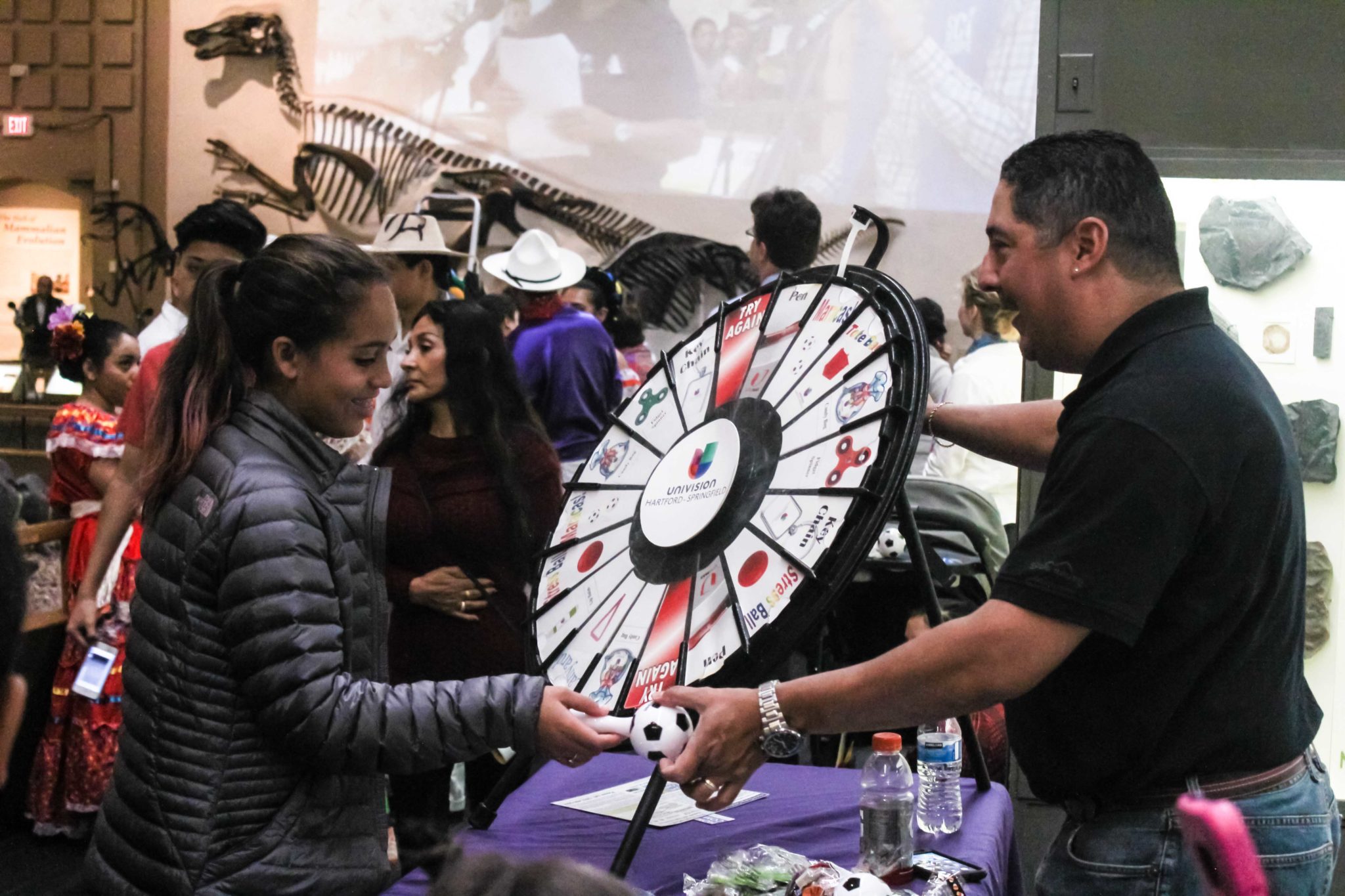
Hispanic families from in and around New Haven piled into the Peabody Museum on Saturday to experience Fiesta Latina, a celebration that combined music, dance and storytelling to highlight Latino culture.
Various community organizations hosted booths at the event where they advertised services, including health care assistance, legal aid and adult education, to those in attendance. Co-host Junta for Progressive Action was one such service provider that contributed to the event’s planning. The museum typically begins planning the event about six months in advance, according to Andrea Motto, the museum’s manager of public and youth engagement. Over 2,000 people were in attendance on Saturday.
“This was the 15th year that we’ve done this event at the museum. So it was sort of the quinceanera for the whole event,” Motto said.
She began working for the Peabody Museum six years ago as the program director for evolutions, an activity that offers free weekly after-school classes for New Haven and West Haven high school students. Her new role involves greater community outreach, including organizing and running the museum’s annual celebration of Latino cultures and traditions.
Community partners in attendance included Univision and UniMas Hartford, Planned Parenthood of Southern New England, the Yale Center for Clinical Investigation and the Center for Infant and Child Research. Organizations were stationed on several floors of the Peabody Museum, handing out informational pamphlets and signing families up for the services they provide.
Most of these organizations are yearly sponsors, while others are newcomers, Motto said. This year, the museum was able to accommodate all partners who wanted to attend.
“There are environmental science centers, the library, health centers that all have useful things that they offer the community at large, but they specifically want to make sure that Hispanic communities know about [them],” Motto said. “We reach out to other organizations that we think would want to have a presence.”
Aside from the multitude of organizations in attendance, the festival also featured a number of activities for children, such as a dig pit, “do it yourself” vertebrates made from pasta, maraca decorating, face painting and map coloring.
The Fiesta also boasted a variety of shows appropriate for the entire family, including a performance by Mariachi Connecticut and another by the Yale Sabrosura Latin Dance Team, a favorite of the day.
“So far we’ve seen the dancing, and it was amazing. I really liked it,” said Sofia Morales, a New Haven teen in attendance. “I just really love Fiesta Latina because it really brings this community together and shows us how important the Latino community is.”
In addition to hosting community groups and organizing activities and performances, collections managers put South American artifacts on display in order to connect the celebration of Latino culture with the museum itself. The artifacts on display included materials from the museum’s anthropology and ornithology collections, which are usually in storage.
Pre-Columbian pottery and South American birds were among the artifacts showcased at tables by Peabody Museum volunteers. One such display, arranged by the Smithsonian’s Jorge Estevez, contained objects related to the Taino Indians.
“What we call ‘Latino’ or ‘Hispanic’ all began with the Taino people in the sense that we were the first ones to make contact with Columbus,” said Estevez. “We were the ones who discovered Columbus, actually, because we were home and he was lost. The very people that Columbus enslaved, that the Spanish intermarried with to become these ‘Latinos’ were overlooked. Many people do not even know what Taino is.”
Most in attendance were residents of New Haven and surrounding communities, rather than Yale students or faculty. Motto attributed this disparity to the event’s advertising, which is generally geared toward Latino residents. The hope, she said, is that attendees will return to the museum in the future.
Many Latino families in attendance are second-generation immigrants who came to the fiesta to connect with their cultures.
“I’m a single dad so I try to take advantage of whatever I can … I feel that being American in the way that a lot of people feel is American, there is a sense that you have to let go of that identity,” said Tony Bermudez, a Bridgeport resident who attended the fiesta with his son. “I struggle with that because I want to know what I’m supposed to teach him … I want to be patriotic. I served in the United States Marine Corp. I love New York. I’m a Mets fan, but I want to be Puerto Rican. And I want him to be Puerto Rican.”
Gaby Mencio | gaby.mencio@yale.edu







